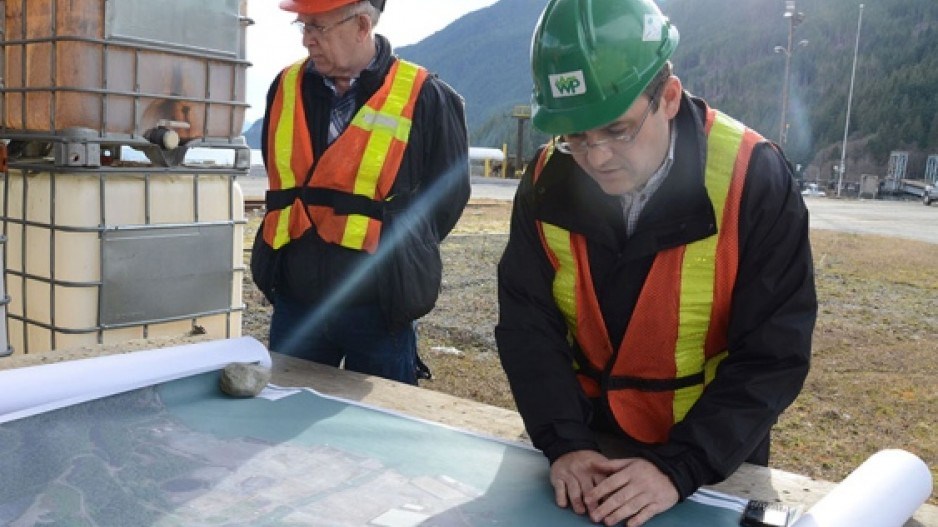If a liquefied natural gas (LNG) processing and export facility is built on the site of the old Woodfibre pulp mill, its refrigerant compressors will run on electricity, according to officials.
The move “will drastically reduce the level of air emissions produced” by the $1.7-billion facility, officials said in a May 13 statement.
Byng Giraud, vice-president of corporate affairs with Woodfibre LNG, said the decision to go electric, as opposed to using natural gas to power the compressors, reduces the facility’s greenhouse gas emissions by approximately 80%, and lower nitrous oxide and carbon monoxide emissions by around 95%.
He said he believes it will make Woodfibre LNG the first such facility in British Columbia to commit to using electricity.
“The electricity is an additional cost to the project, but [the decision] really was driven by what we heard at the public consultations and the desire of the provincial government to have a green LNG industry,” Giraud said.
“We sought input from the community at an early stage and ‘air quality’ was a top concern,” he said. “Our engineers have now confirmed that going electric is indeed feasible, so the choice is a clear one.”
Last fall, District of Squamish council passed a resolution calling on the project, if it goes ahead, to be powered with electricity. Giraud said project engineers and B.C. Hydro officials have spent the past few months looking at its feasibility.
“The system impact study with B.C. Hydro is ongoing but the outcome of that will only affect some of the detailed elements. It won’t affect our ability to do it,” he said.
Giraud said the proponents’ next big decisions involve the layout of the site — including whether parts of the facility will be located on land or on floating platforms — and technical issues surrounding how the liquefaction facilities will be designed.
The project, which would see up to 2.1 million tonnes of LNG shipped from the Squamish facility beginning as early as 2017, is undergoing a blended federal-provincial environmental review. If it receives certification, the parent company, Singapore-based Pacific Oil and Gas, is slated to decide whether to go ahead with the project in the first half of 2015.




